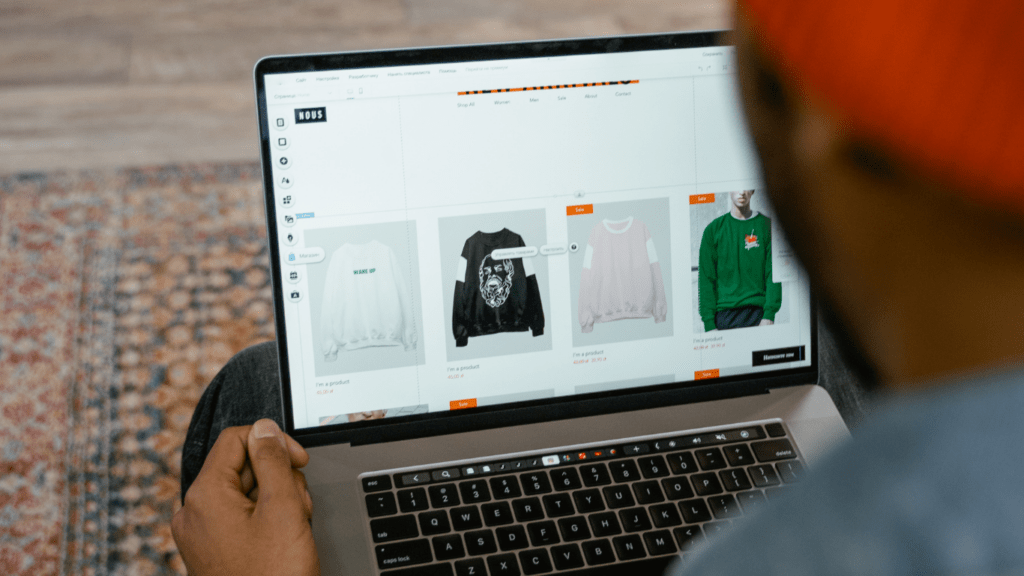Understanding Consumer Behavior
Consumers’ online shopping habits vary widely based on several factors. These include demographic aspects such as:
- age
- gender
- income level
Younger audiences, for example, tend to be more comfortable with online platforms and drive mobile commerce trends.
Motivations for online shopping differ significantly. Convenience often tops the list, as it allows people to shop from anywhere at any time. Price sensitivity also plays a crucial role, supported by features like price comparison tools and discounts exclusive to online stores.
Product reviews hold substantial weight in decision-making processes. Authentic feedback from previous buyers helps build trust and reduces the perceived risk of purchasing unseen products. This peer validation can tip the scales in favor of or against a purchase.
Website design and user interface impact consumer behavior, too. A seamless, intuitive site layout encourages prolonged browsing and increases the likelihood of completing a purchase. Conversely, a cluttered site with poor navigation can deter consumers, leading to high bounce rates.
Understanding these factors helps marketers target their strategies effectively. By tailoring approaches to demographic preferences, leveraging motivations, incorporating robust review systems, and optimizing web interfaces, brands can enhance consumer satisfaction and conversion rates.
Key Factors Influencing Online Shopping
Consumer behavior in online shopping is shaped by several key factors. Understanding these aspects helps marketers improve user experience and drive higher conversion rates.
Convenience and Accessibility
Shopping from home saves time and effort. Websites that offer easy navigation, fast loading times, and mobile compatibility attract more shoppers.
According to a 2020 Statista survey, 49% of consumers shop online for convenience, valuing the ability to purchase anytime, anywhere. Providing multiple payment options also enhances the accessibility of online stores.
Product Reviews and Ratings
Product reviews and ratings significantly influence purchase decisions. Customers trust peer feedback more than marketing claims. A 2021 BrightLocal study found that 87% of consumers read online reviews before buying products.
Positive reviews and high ratings build trust and credibility, leading to higher sales. Positive reviews also reduce uncertainty and bolster consumer confidence.
Pricing Strategies
Competitive pricing encourages purchases. Offering discounts, flash sales, and dynamic pricing strategies creates a sense of urgency and drives impulse buys. Statista reported in 2021 that 86% of consumers compare prices before purchasing online.
Transparent pricing, without hidden costs, maintains consumer trust. Implementing loyalty programs and personalized offers also incentivizes repeat purchases.
Psychological Aspects of Online Shopping
Studying the psychological aspects helps in understanding consumer behavior better. It dives into how emotions and cognition drive online purchases.
Impulse Buying
Impulse buying is common in online shopping. Consumers often make unplanned purchases due to various triggers. Limited-time offers and flash sales create urgency. Eye-catching visuals and easy checkout processes reduce hesitation, leading to spontaneous purchases.
For example, Amazon’s “Deal of the Day” prompts quick decisions by highlighting temporary bargains. Providing personalized recommendations based on browsing history also fuels impulsive buying, making it hard for consumers to resist.
Social Influence
Social influence greatly affects online shopping behavior.
- Reviews and ratings from other users provide social proof.
- High ratings and positive feedback increase the likelihood of purchase.
- Platforms like Yelp and TripAdvisor heavily rely on user-generated content to build a trustworthy reputation.
- Social media platforms, such as Instagram and Facebook, use influencers to shape buying decisions.
When users see their peers or favorite influencers endorsing a product, they feel more confident and motivated to buy it. Social sharing features on e-commerce sites encourage users to share their purchases, further amplifying social influence.
These psychological aspects, including impulse buying and social influence, show how emotions and social interactions shape online shopping behavior. Understanding these factors can help businesses tailor their strategies to better meet consumer needs and expectations.
Technological Impact on Consumer Behavior

Advances in technology have significantly influenced consumer behavior in online shopping. Key areas of impact include mobile shopping and artificial intelligence.
Mobile Shopping Trends
Mobile devices have become integral to online shopping. Nearly 73% of e-commerce sales in 2021 came from mobile users, according to eMarketer. Responsive website design, mobile apps, and mobile payment options enhance user experience and convenience.
Retailers prioritize mobile optimization to capture this growing segment. Features like push notifications and one-click purchasing facilitate seamless transactions, encouraging frequent mobile shopping.
The Role of Artificial Intelligence
Artificial intelligence (AI) revolutionizes customer interaction in online shopping. AI-driven chatbots provide instant customer support, addressing queries and enhancing user experience.
Personalization algorithms analyze browsing behaviors and previous purchases to recommend products tailored to individual preferences. This increases engagement and sales. AI also enables dynamic pricing algorithms that adjust prices based on demand, competition, and consumer behavior, ensuring competitive pricing and higher conversion rates.
Future Trends in Online Shopping
Online shopping continues to evolve, driven by technological advancements and changing consumer preferences. New trends are emerging that promise to revolutionize the e-commerce landscape.
Virtual Reality Shopping Experiences
Virtual reality (VR) enhances the online shopping experience, allowing consumers to explore products in a simulated environment. VR headsets let shoppers walk through virtual stores, browse products interactively, inspect items from different angles, and even try on clothing or accessories in a 3D space. Big retailers like Ikea and Sephora have invested in VR to offer immersive shopping experiences.
Personalized Shopping
AI and machine learning enhance personalization in online shopping. Algorithms analyze browsing history, past purchases, and consumer preferences to offer tailored product recommendations. Personalized emails and promotions increase engagement and drive conversions. Netflix and Amazon use AI to provide customized shopping experiences, boosting customer satisfaction and sales.
